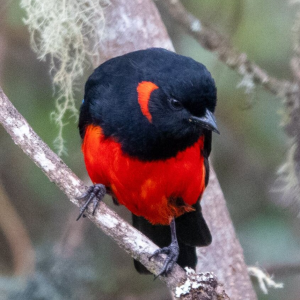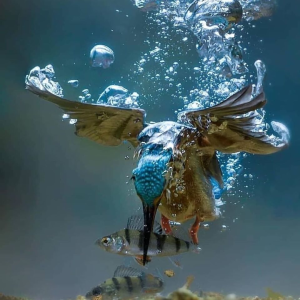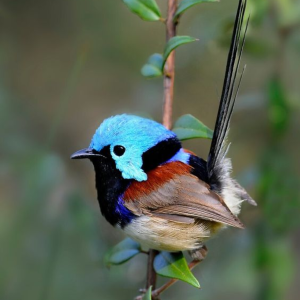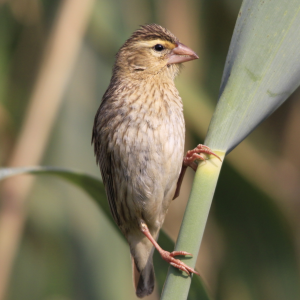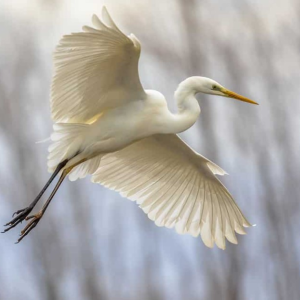Nicknamed “Venice of the Netherlands”, this small town is littered with hundreds of canals and century old houses. The only difference between Venice and this quaint community is that you will not find a single gasoline engine here. There are no roads in Giethoorn, there isn’t a need for loud and disruptive cars. It is just a laid back community that travels on foot and when needed leisurely floats down the canal. This Danish town is straight out of a fairy tale.
It is very quiet here in Giethoorn, the loudest noise heard is often a quacking duck or rustling bird.
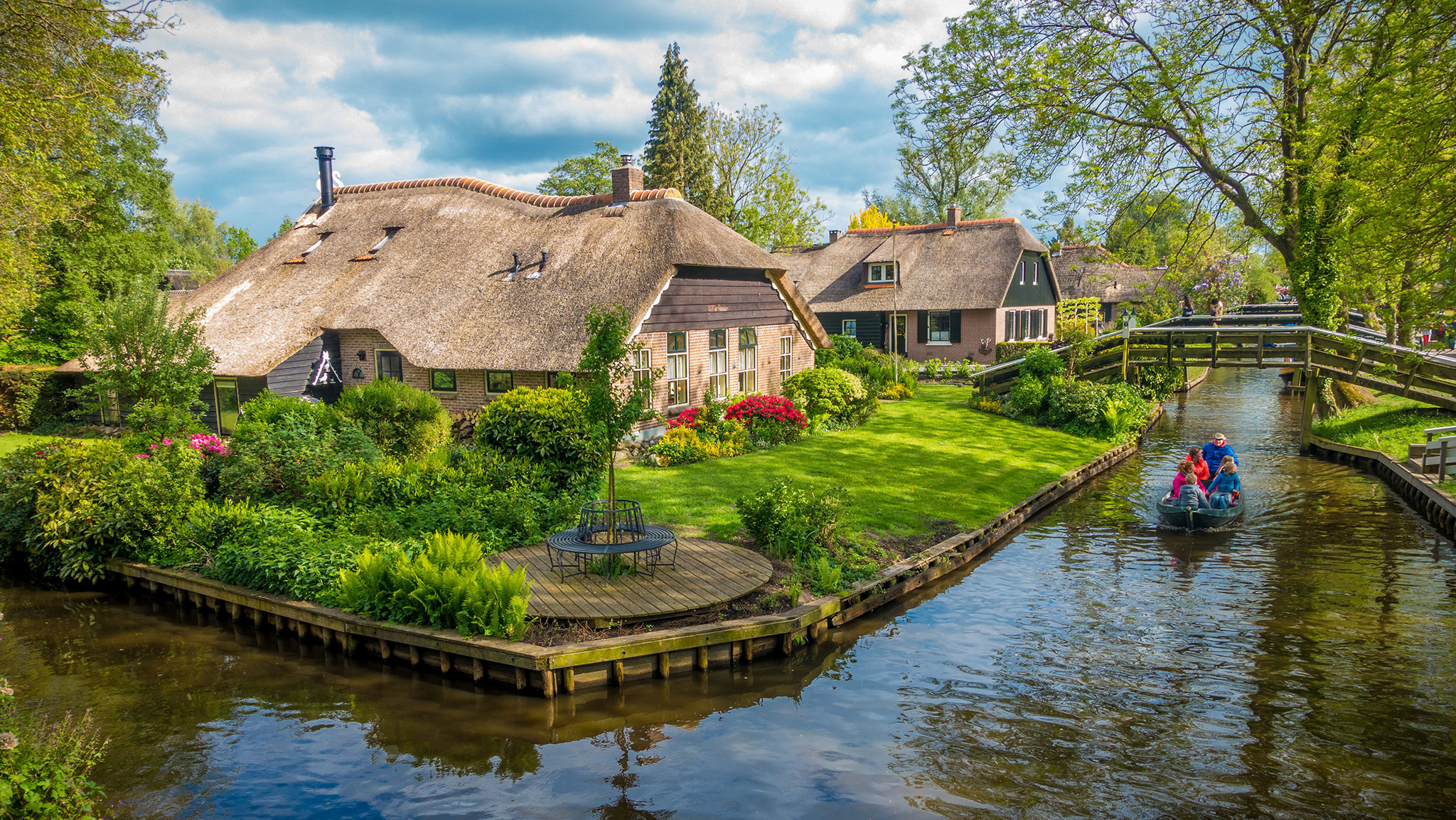
The meditative silence can be attributed to the diesel-free waters of the canals.
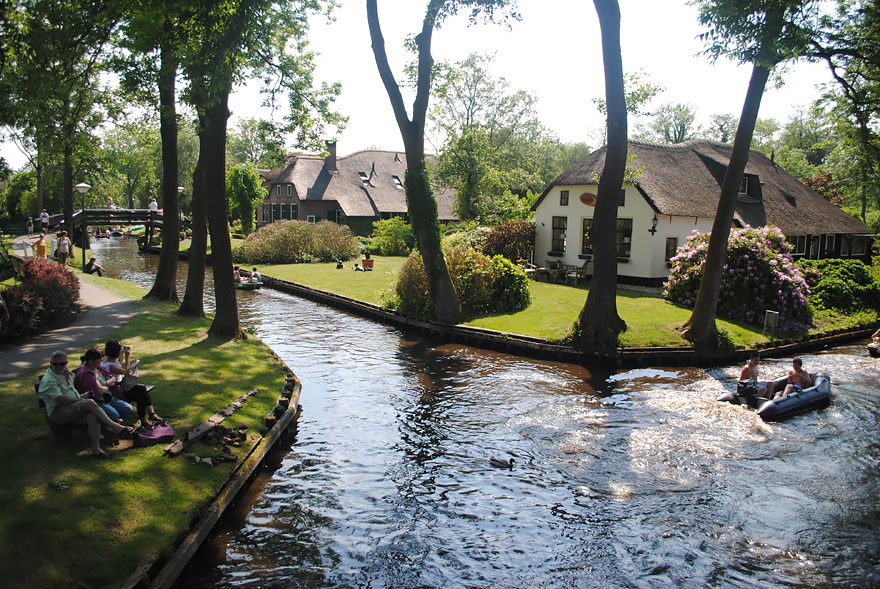
.
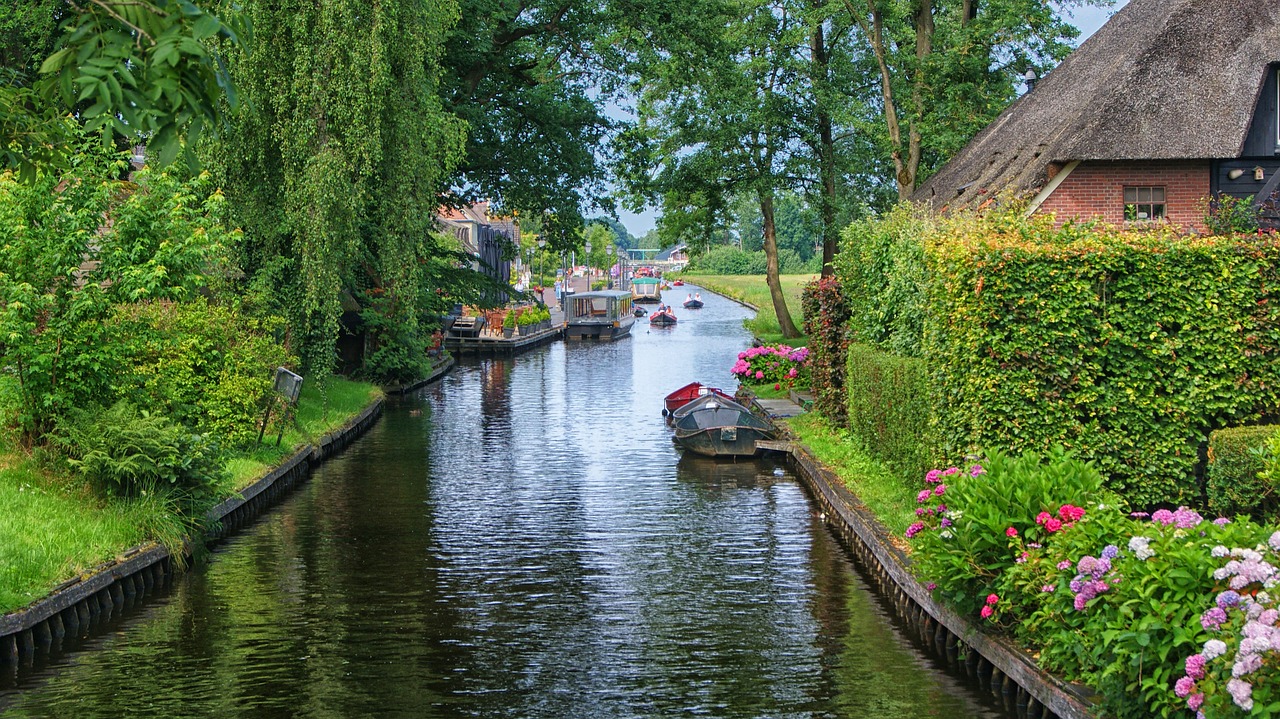
All boats here are powered by electricity.
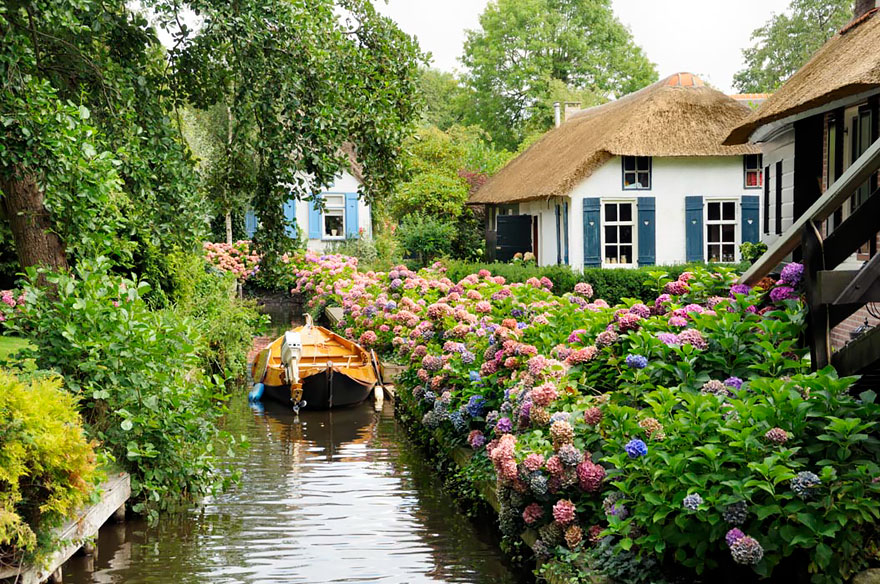
.
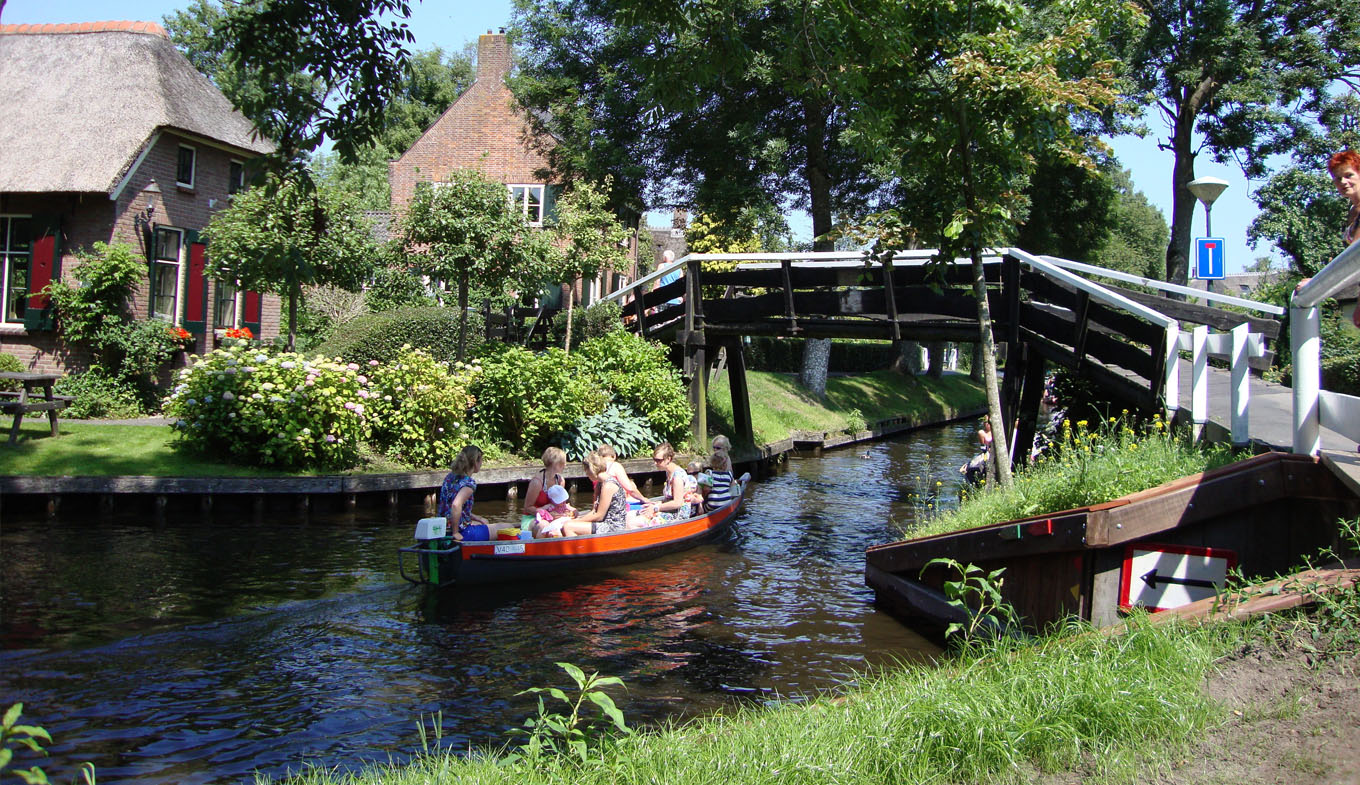
You can drift down a side street, or rather just a smaller canal, to observe a resident casually strolling through the neighborhood.
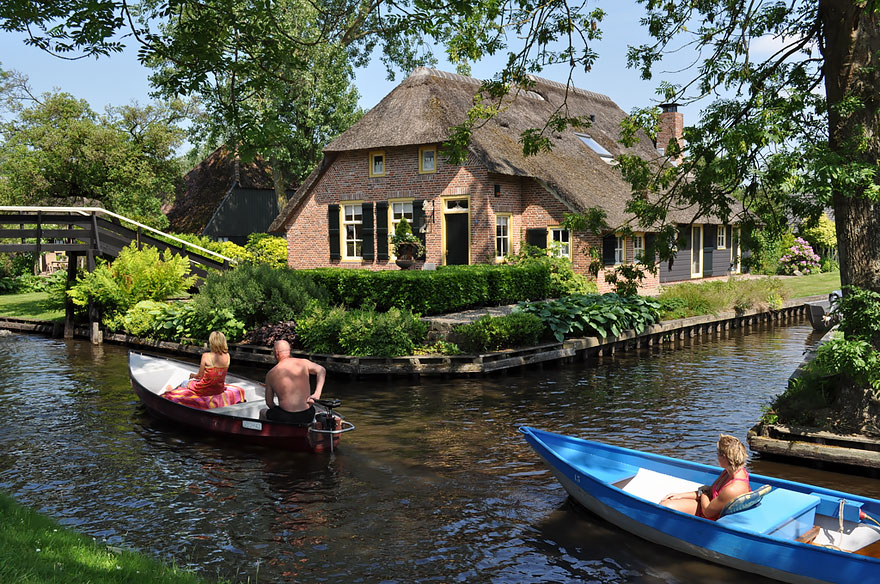
.
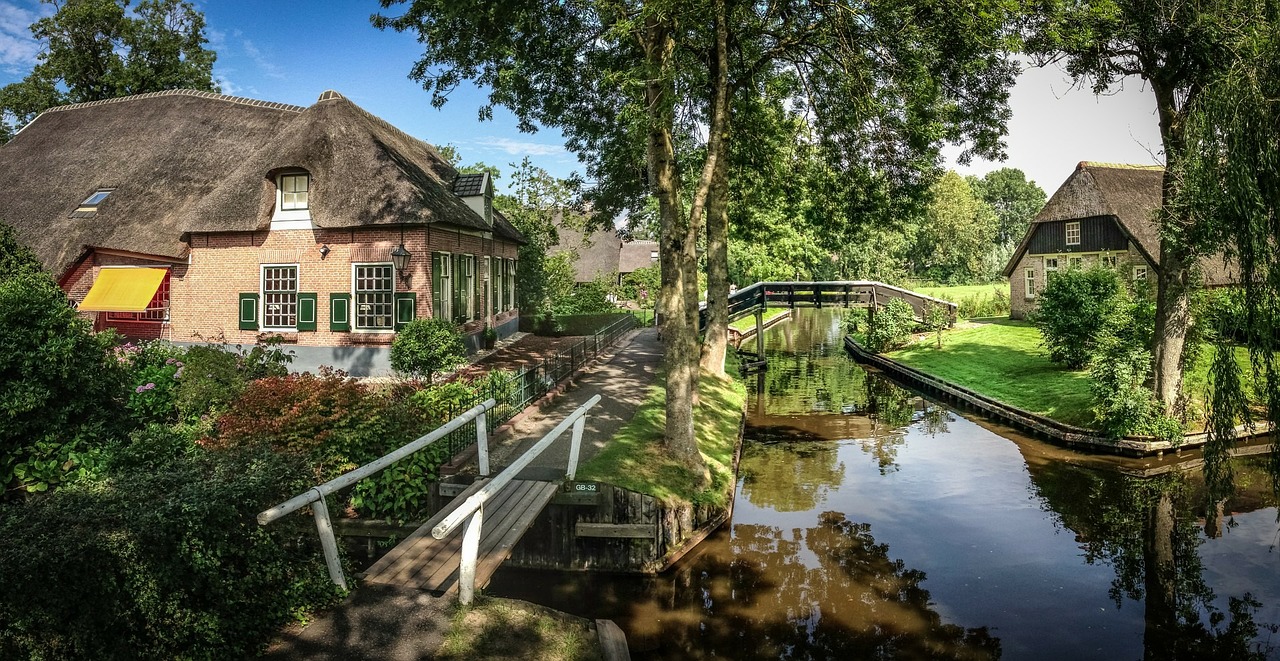
You will float underneath several delicate wooden bridges as you observe the intricate thatched roofs of the old farm houses that make up the community.
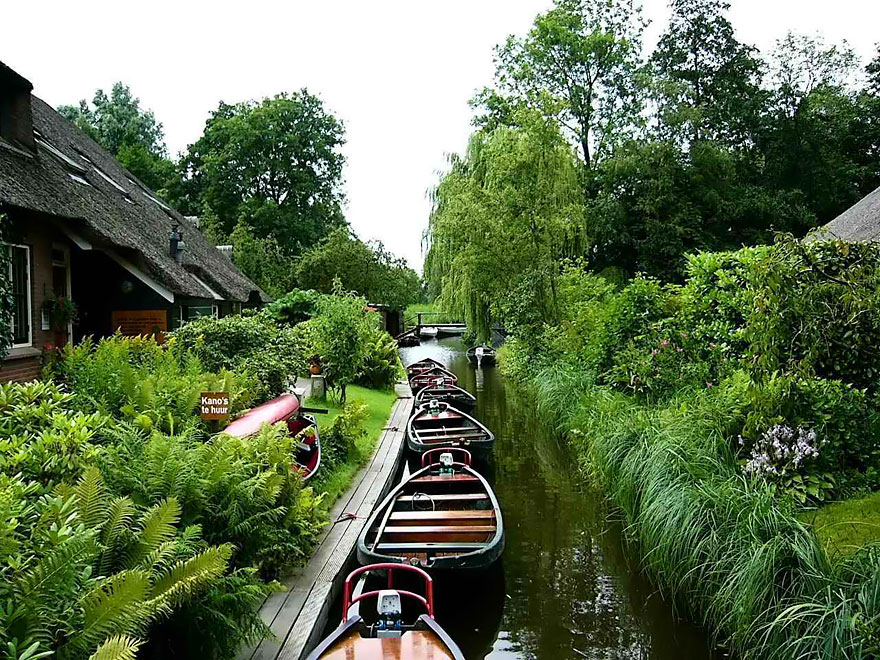
.
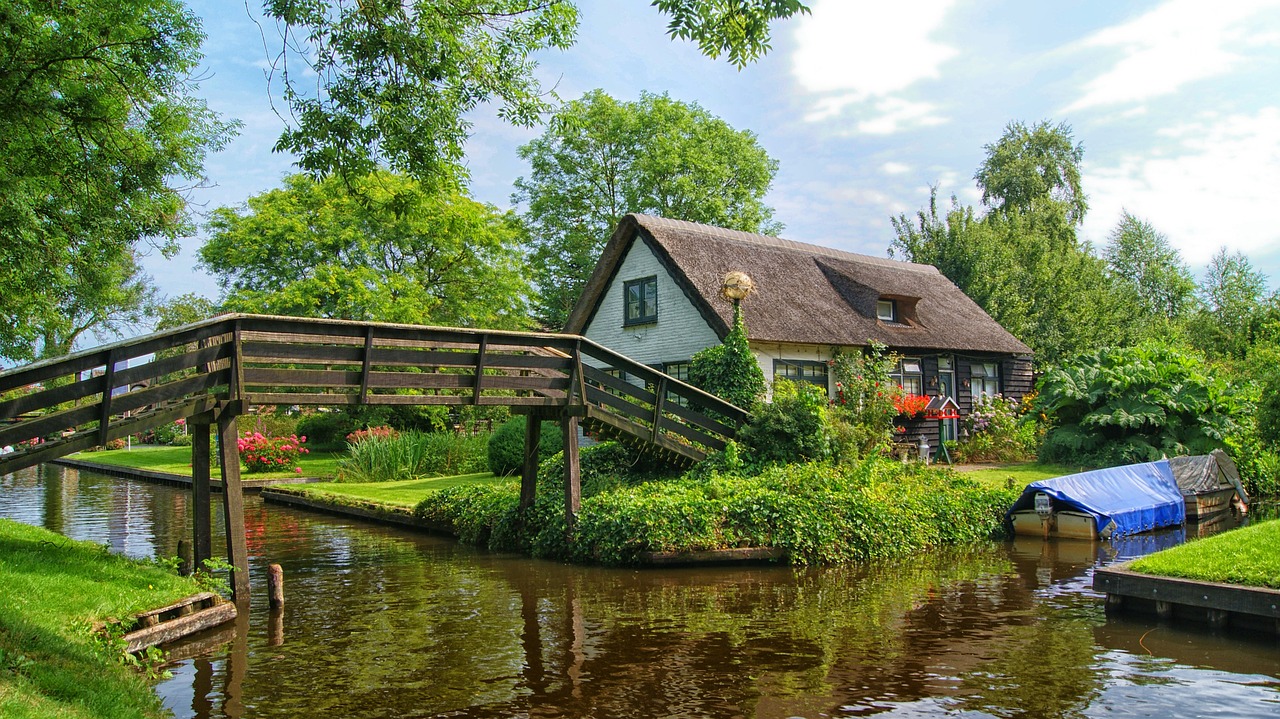
In earlier times, tiled roofs were a sign of wealth due to thatched roofs being cheaper. Today, the exact opposite is true.
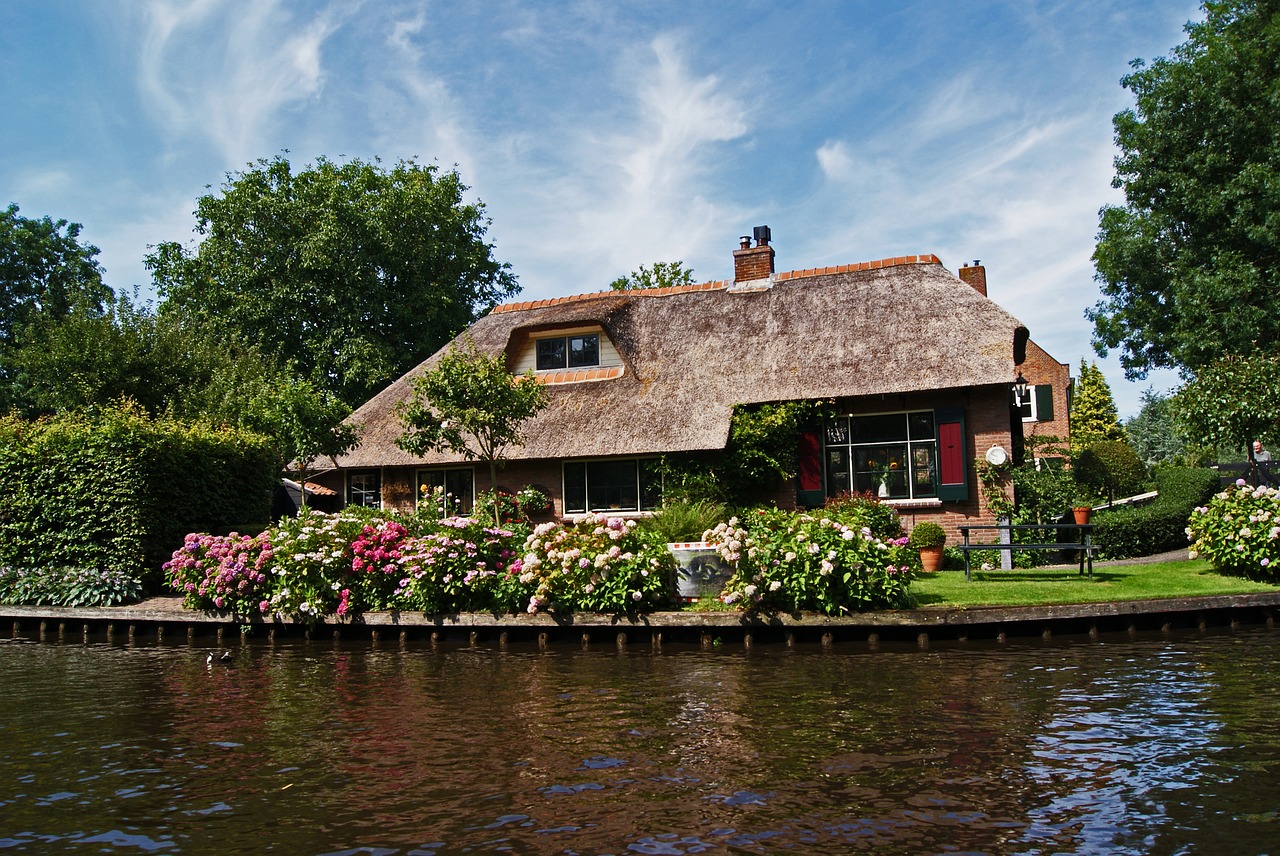
It is a luscious and still town in Giethoorn. You will not find crowded walkways or disruptive commercialism here.
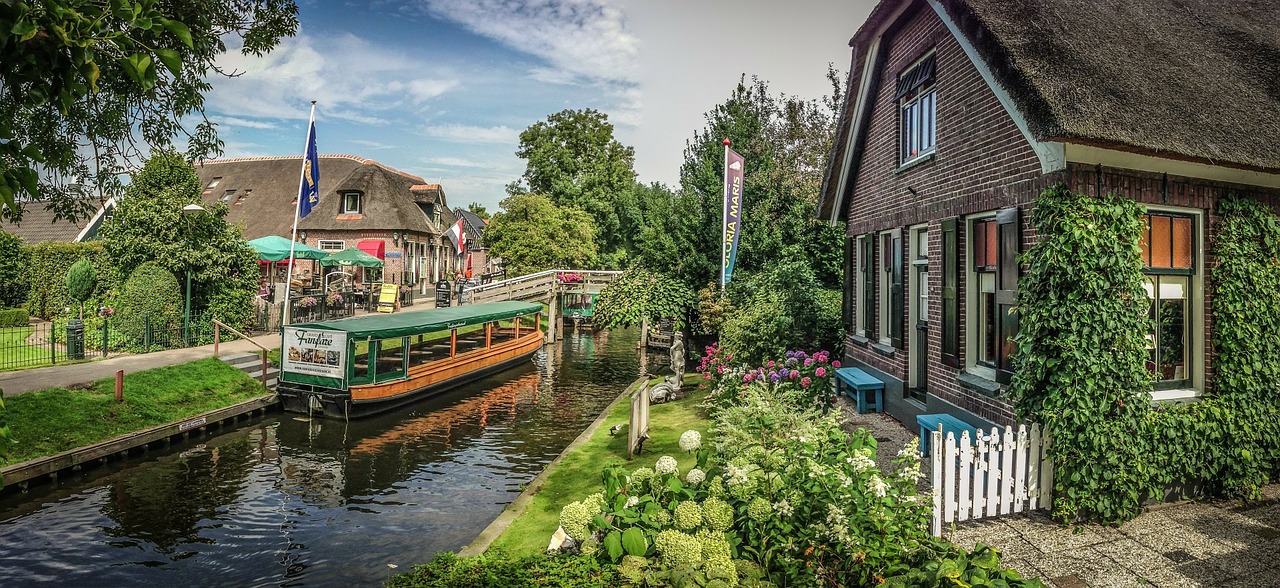
Due to the lack of roads, most homes not accessible by car so the post man delivers mail via boat.
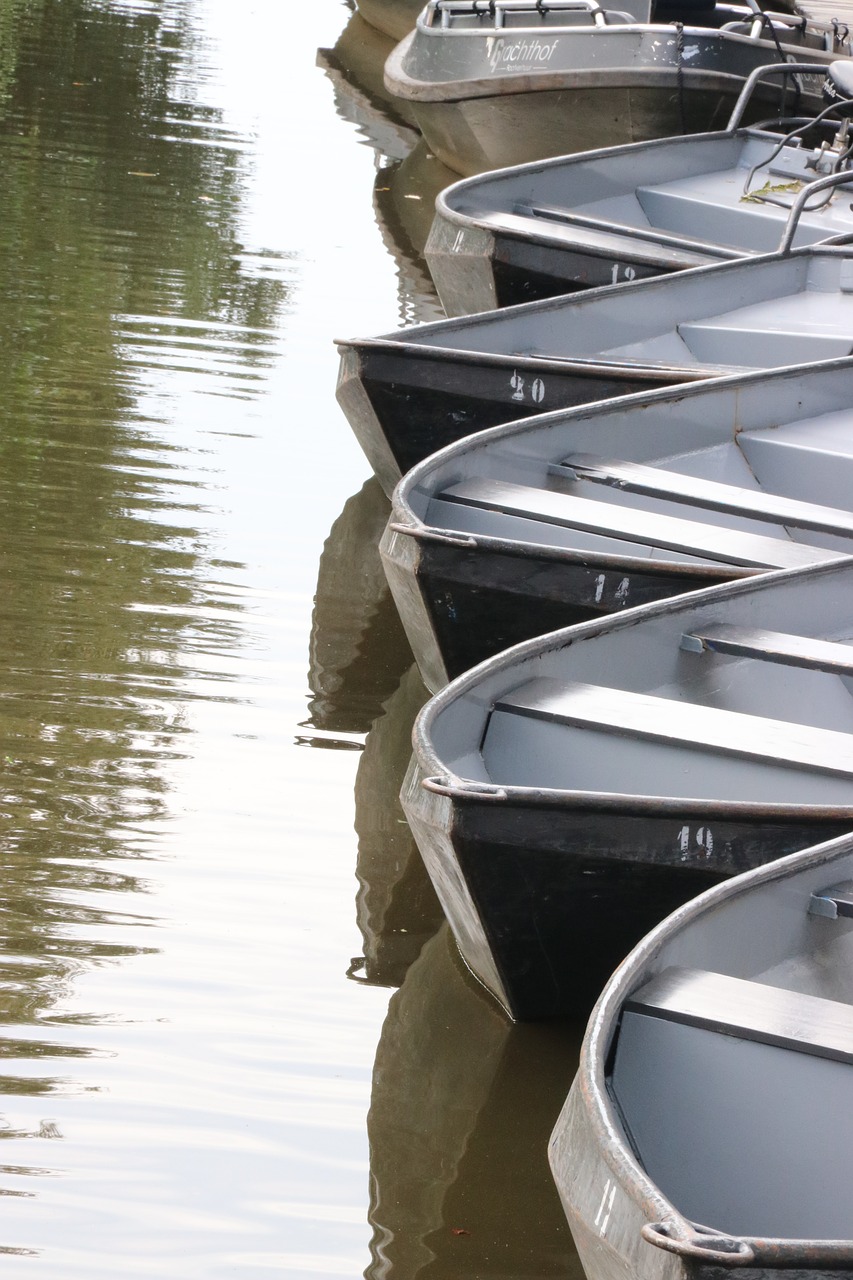
When the canals freeze over in the winter, residents gracefully travel by ice skating in place of their dinghies.
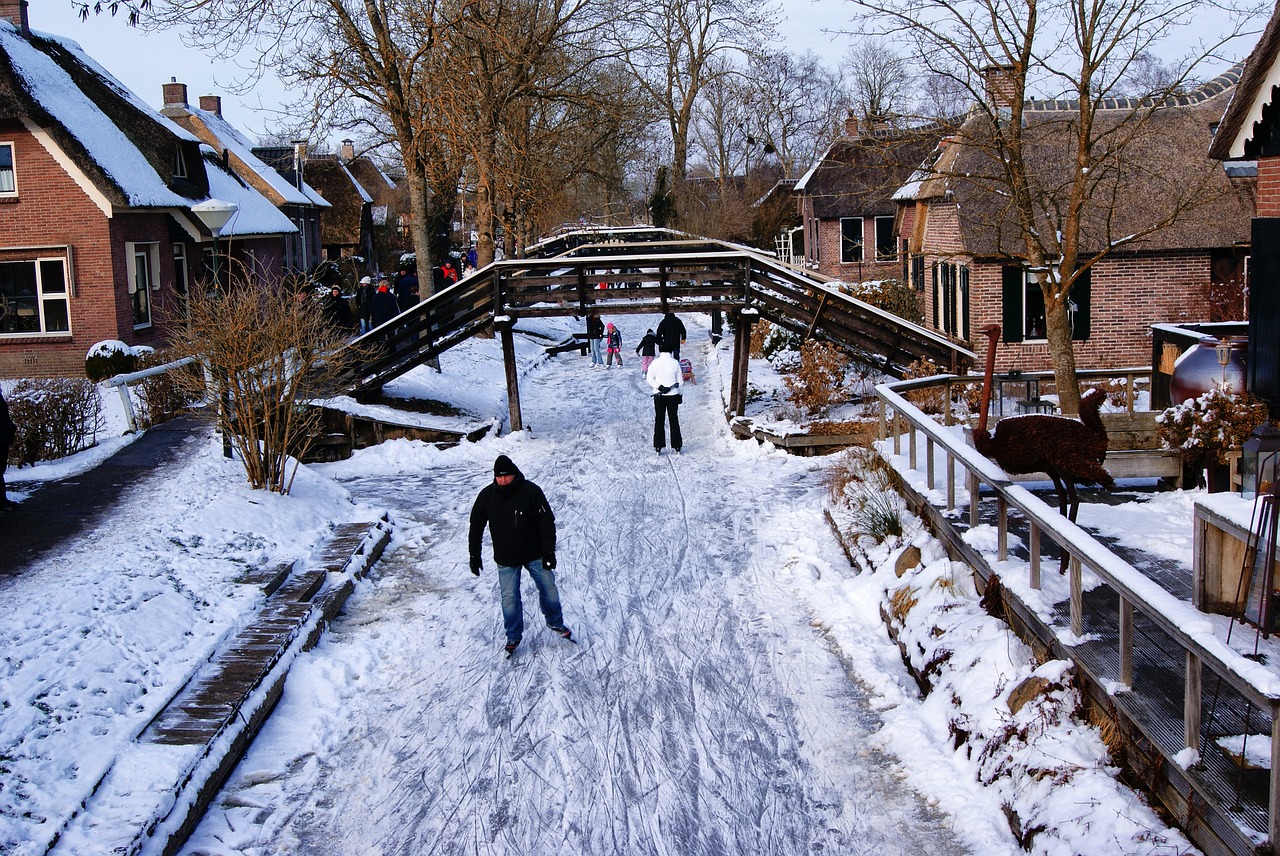
Today, only about 3,000 people call this community home.
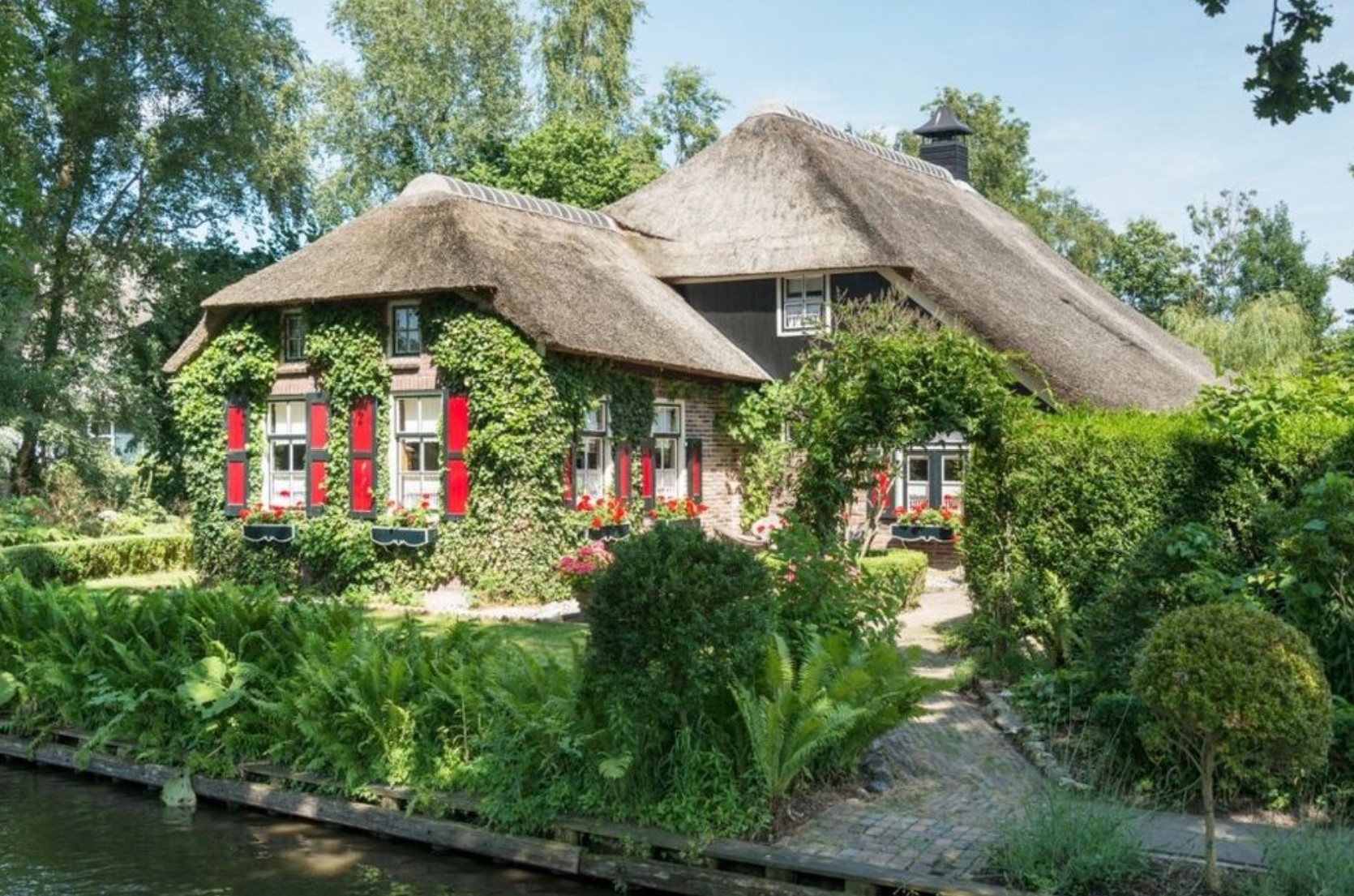
This fairy tale like town is located in the province of Overijssel, positioned in the east of the Netherlands.
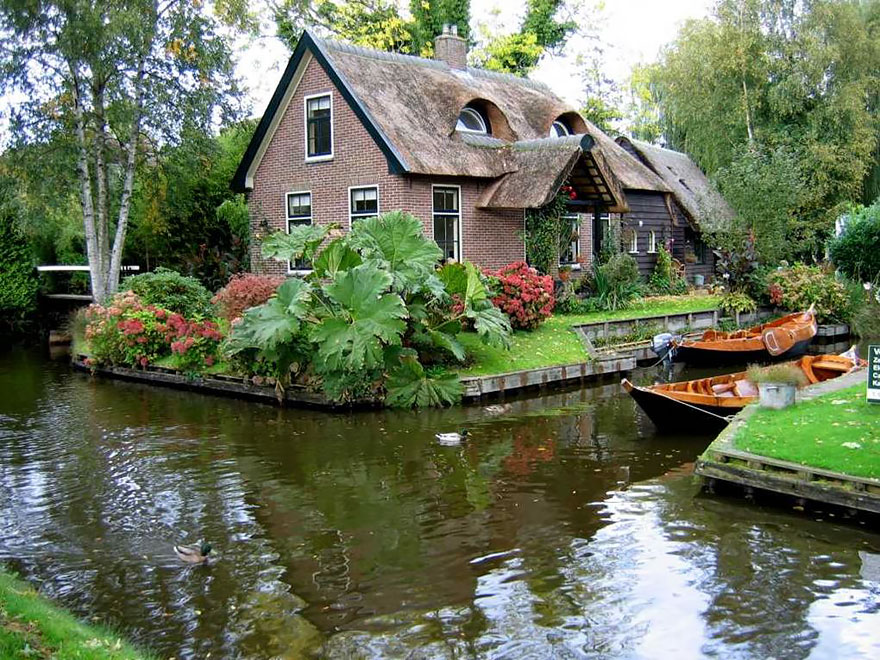
.
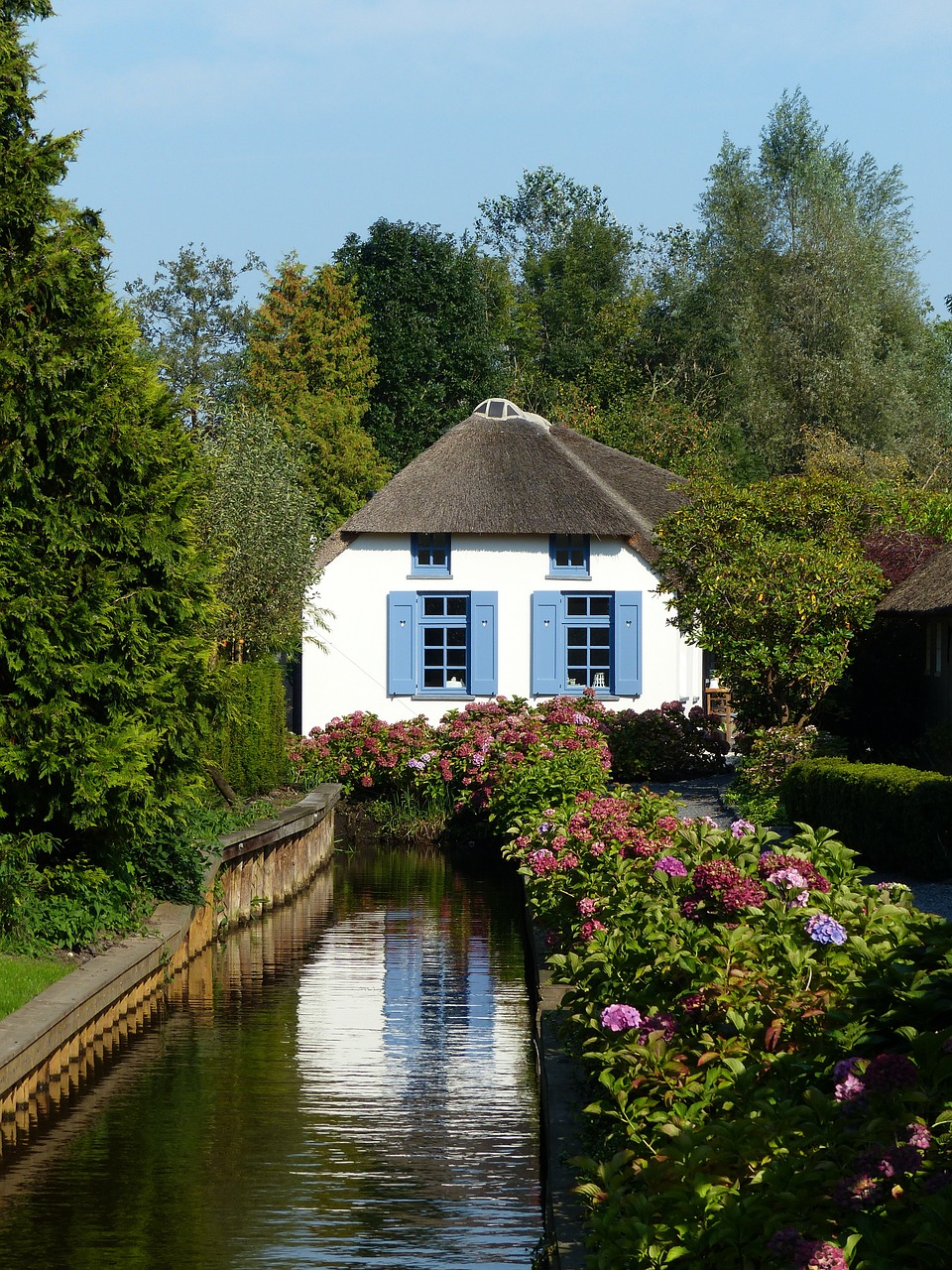
There are more than 60 miles of canals to explore making the number one tourist attraction in Giethoorn boating.
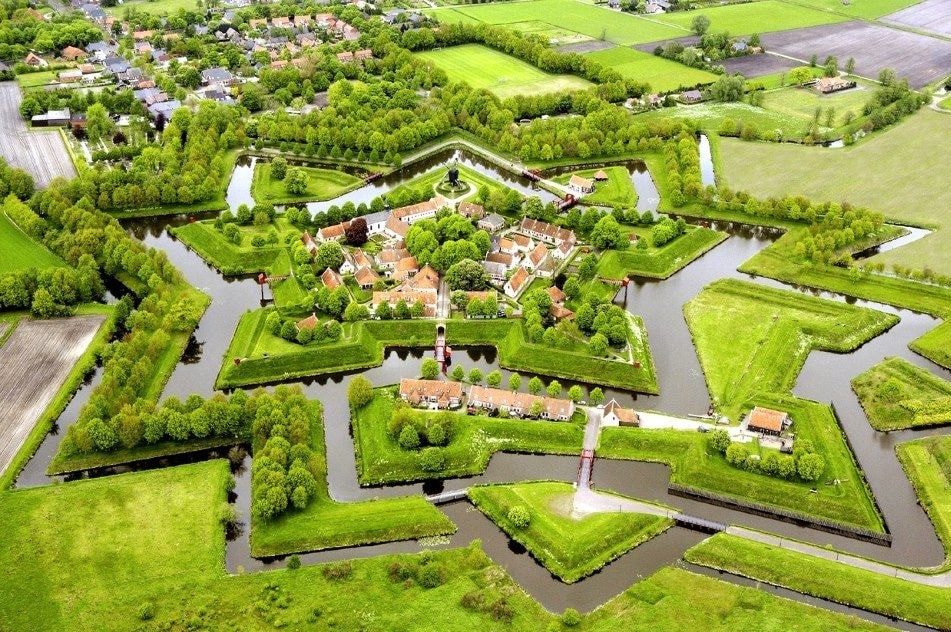
The name Giethoorn means “the horns of goats”. The first inhabitants discovered hundreds of goat horns on the land which the community is now built on.

The town was founded in 1230 by fugitives from the Mediterranean who subsequently stumbled upon vast quantities of peat moss in the ground.
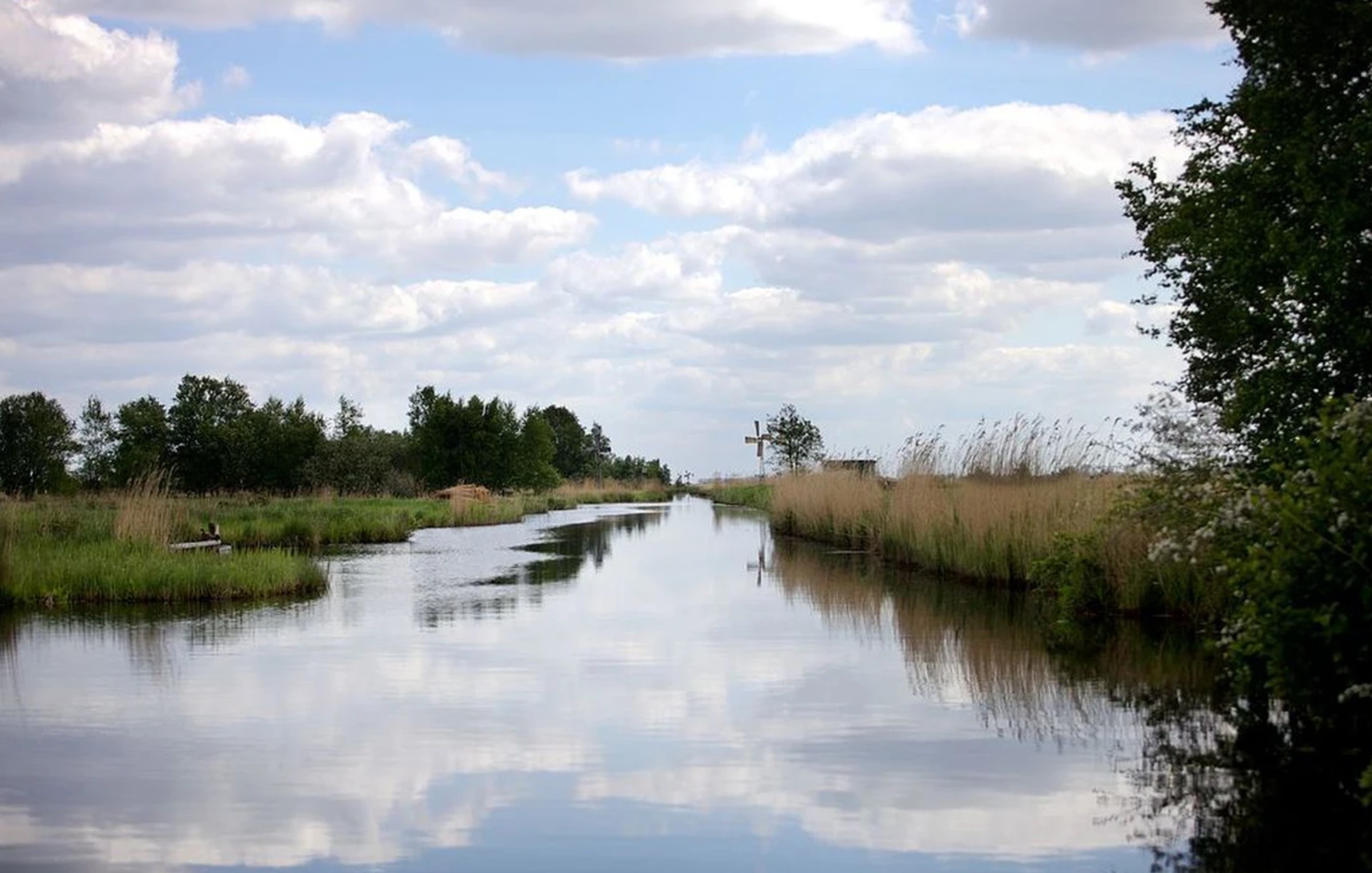
The mining of peat moss created lakes and ponds with islands in between.
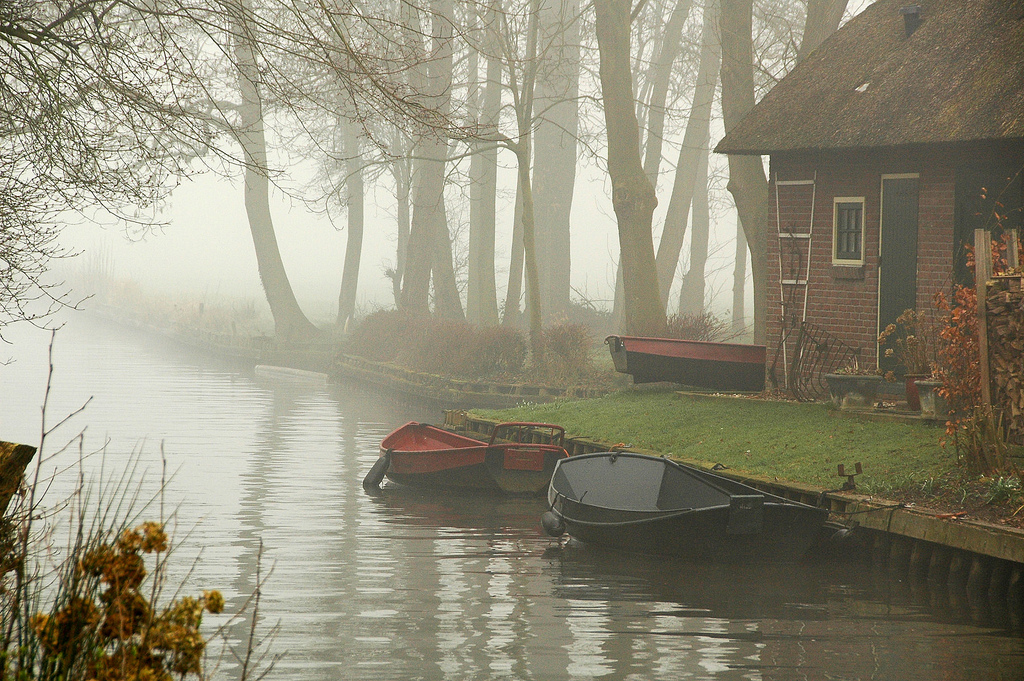
It is on these islands that the settlers built their homes, the lakes and ponds turned into canals over time.
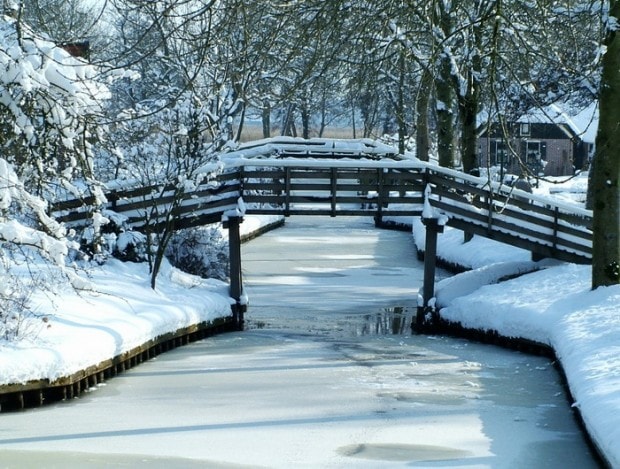
As a result, access was only possible by bridge or punters, a narrow boat pushed by a punteraar (a long pole).
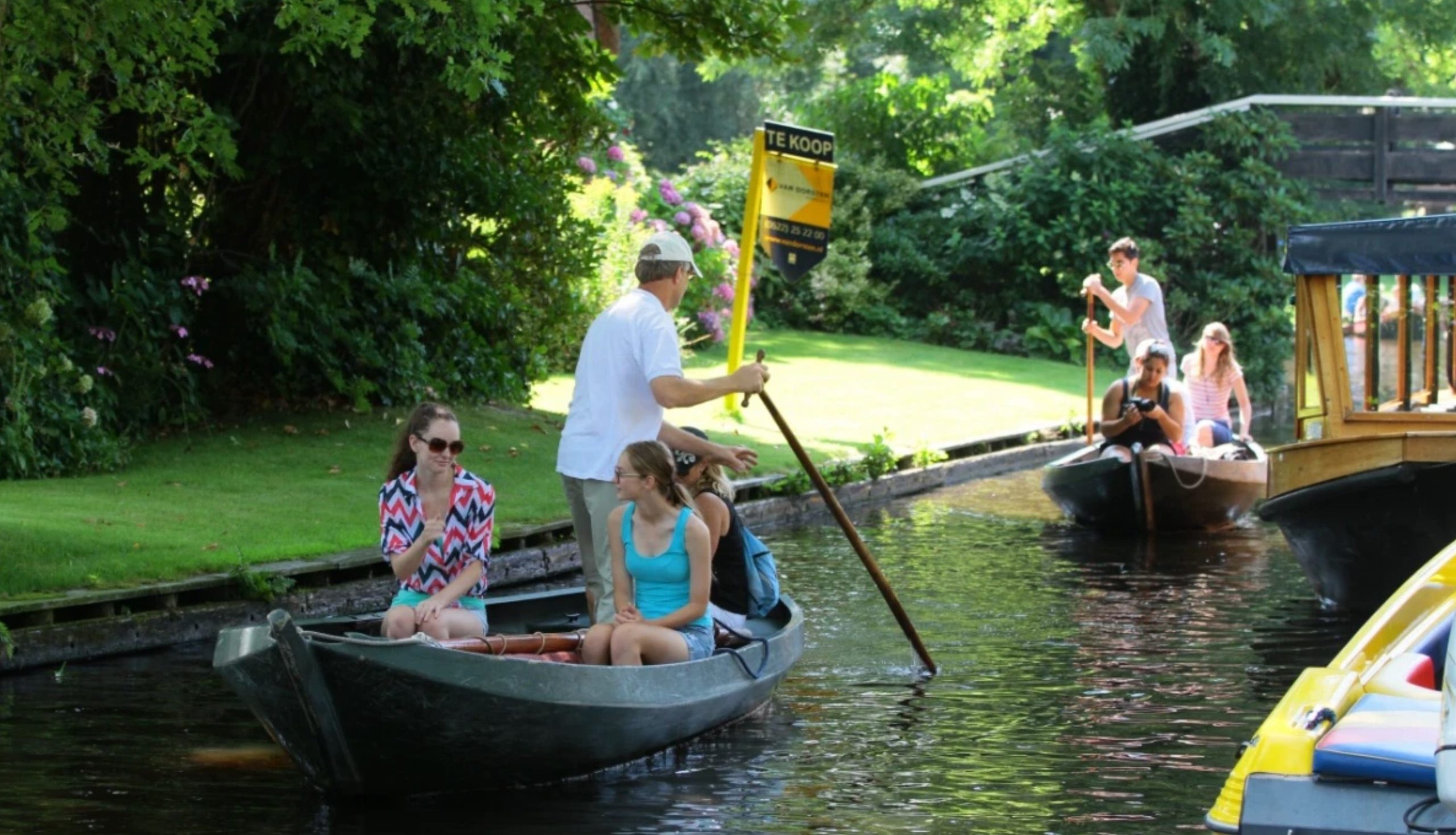
Giethoorn became locally famous in the 1960’s when Dutch film maker Bert Haanstra directed his famous comedy Fanfare there.
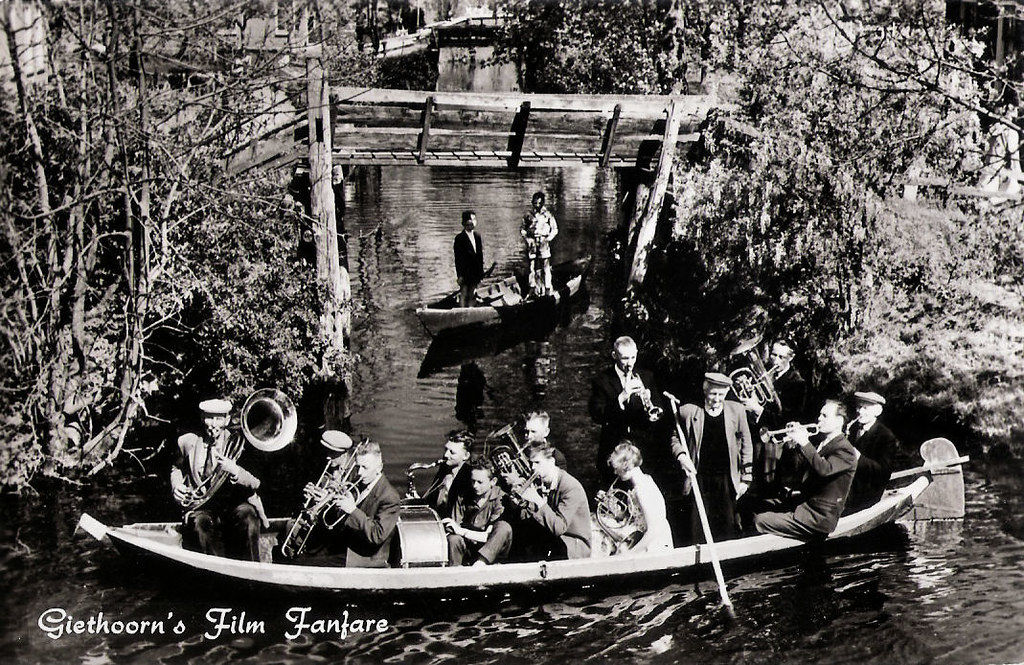
Since then, the town has been a popular tourist destination for boating, cycling, and its wide selection of cafes and restaurants.
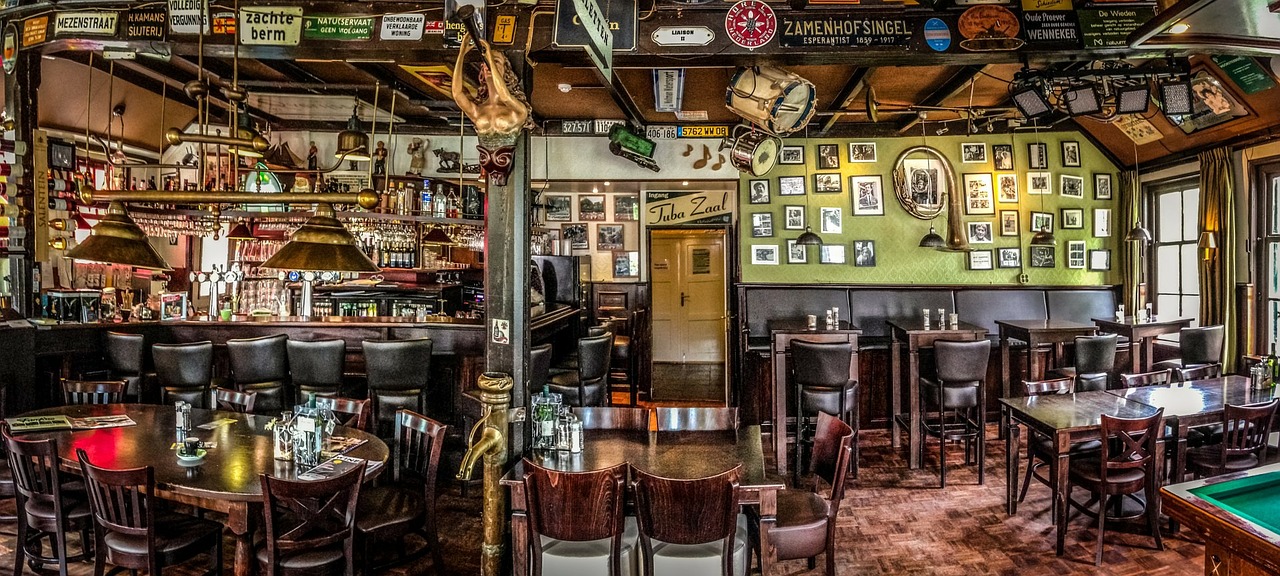
H/T
If you’ve ever wanted to live in a real-life fairytale, you may want to consider moving to the village of Giethoorn. This seems like my type of place to live.
